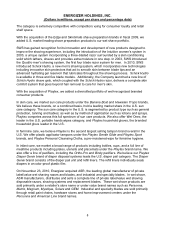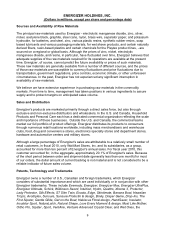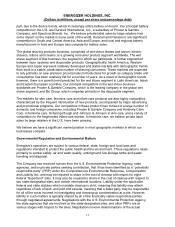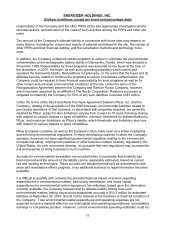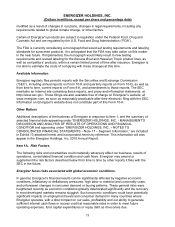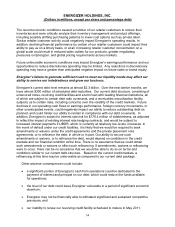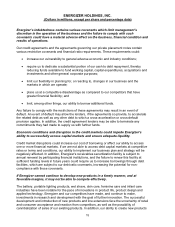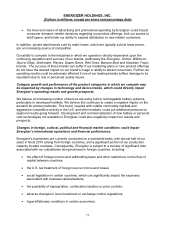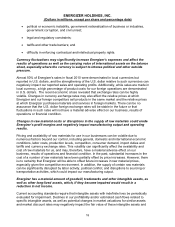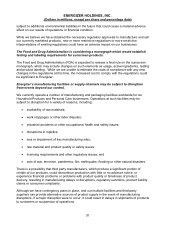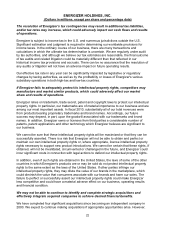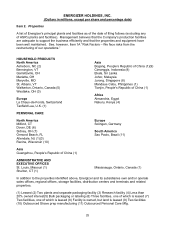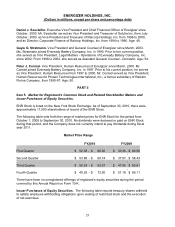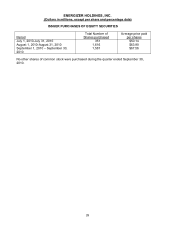Energizer 2010 Annual Report Download - page 28
Download and view the complete annual report
Please find page 28 of the 2010 Energizer annual report below. You can navigate through the pages in the report by either clicking on the pages listed below, or by using the keyword search tool below to find specific information within the annual report.
ENERGIZER HOLDINGS, INC.
(Dollars in millions, except per share and percentage data)
18
• political or economic instability, government nationalization of business or industries,
government corruption, and civil unrest;
• legal and regulatory constraints;
• tariffs and other trade barriers; and
• difficulty in enforcing contractual and intellectual property rights.
Currency fluctuations may significantly increase Energizer’s expenses and affect the
results of operations as well as the carrying value of international assets on the balance
sheet, especially where the currency is subject to intense political and other outside
pressure.
Almost 50% of Energizer’s sales in fiscal 2010 were denominated in local currencies but
reported in U.S. dollars, and the strengthening of the U.S. dollar relative to such currencies can
negatively impact our reported sales and operating profits. Additionally, while sales are made in
local currency, a high percentage of product costs for our foreign operations are denominated
in U.S. dollars. The recent economic crises revealed that exchange rates can be highly
volatile. Changes in currency exchange rates may also affect the relative prices at which
Energizer and our foreign competitors sell products in the same market and the relative prices
at which Energizer purchases materials and services in foreign markets. There can be no
assurance that the U.S. dollar foreign exchange rates will be stable in the future or that
fluctuations in such rates will not have a material adverse effect on our business, results of
operations or financial condition.
Changes in raw material costs or disruptions in the supply of raw materials could erode
Energizer’s profit margins and negatively impact manufacturing output and operating
results.
Pricing and availability of raw materials for use in our businesses can be volatile due to
numerous factors beyond our control, including general, domestic and international economic
conditions, labor costs, production levels, competition, consumer demand, import duties and
tariffs and currency exchange rates. This volatility can significantly affect the availability and
cost of raw materials for us, and may, therefore, have a material adverse effect on our
business, results of operations and financial condition. In the past, substantial increases in the
cost of a number of raw materials have been partially offset by price increases. However, there
is no certainty that Energizer will be able to offset future increases in raw material prices,
especially given the competitive environment. In addition, the supply of certain raw materials
can be significantly disrupted by labor activity, political conflict, and disruptions to sourcing or
transportation activities, which could impact our manufacturing output.
Energizer has a material amount of goodwill, trademarks and other intangible assets, as
well as other long-lived assets, which, if they became impaired would result in a
reduction in net income.
Current accounting standards require that intangible assets with indefinite lives be periodically
evaluated for impairment. Declines in our profitability and/or estimated cash flows related to
specific intangible assets, as well as potential changes in market valuations for similar assets
and market discount rates may negatively impact the fair value of these intangible assets and


